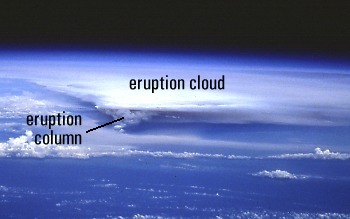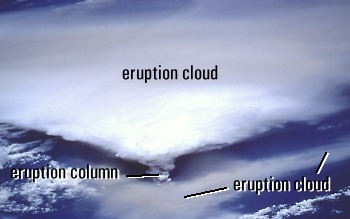eruption cloud


Photographs taken by Space Shuttle astronauts about 24 hours after the start of the eruption of Rabaul Caldera in 1994. The eruption column rose to at least 18 km above sea level where the volcanic ash and gas were blown west to form a fan-shaped eruption cloud. A smaller eruption cloud (bottom photograph, lower right) was blown northward by lower-level winds.
An eruption cloud is a cloud of tephra and gases that forms downwind of an erupting volcano. The vertical pillar of tephra and gases rising directly above a vent is an eruption column.
Eruption clouds are often dark colored – brown to gray – but they can also be white, very similar to weather clouds. Eruption clouds may drift for thousands of kilometers downwind and often become increasingly spread out over a larger area with increasing distance from an erupting vent (note fan-shaped eruption cloud in photographs at left). Large eruption clouds can encircle Earth within days.
Eruption cloud is often used interchangeably with plume or ash cloud.


